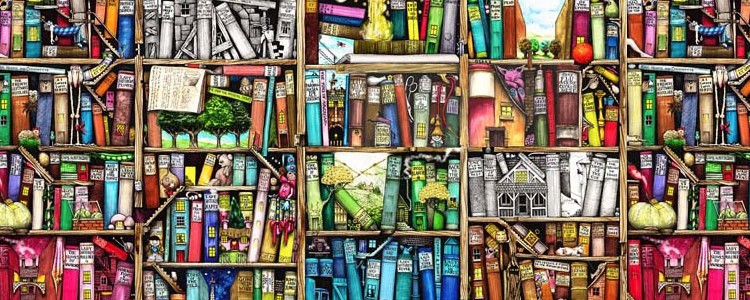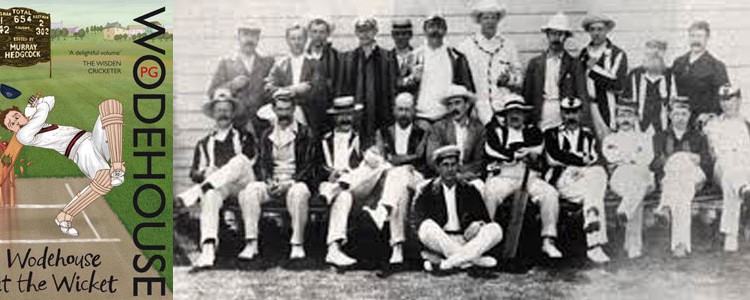On 16 September, Chennai inaugurated the Anna Centenary Library (ACL), a magnificent eight-storey structure said to be South Asia’s largest and most elegantly designed state-of-the-art library. The ACL will stock 1.20 million books in all major languages of the world, besides providing access to 0.2 million e-books and 20,000 e-journals. The $40 million which has been spent on ACL is unusual by Indian standards.
Unusual, because the Indian government is unhelpful about books. Aroon Tikekar, who is president of the Asiatic Society of Mumbai and was former editor of Loksatta says: “There was a directive that there cannot be a tax on knowledge. But the municipal corporation in Maharashtra (one of the most progressive states in India) levied octroi on books. After some protest, this was revived to no tax on essential books.” This created confusion about what was an essential book.
Tikekar says, “Should a country of this size with so many languages not have a national policy for books! Maharashtra was known for its network of more than hundred public libraries, even that is depleting.”
Having said that Tikekar is still hopeful. One reason is, he inaugurated a new initiative recently. http://www.bookganga.com/eBooks/ is an online website for Indian literature. It boasts of having the largest repository of Marathi books. And attempts to give Marathi authors a “sexier” look.
All about books
The book demand is being propelled by India’s — 8.8% growth in 2010 — and the reading habits of the burgeoning Indian middle class.
Publishers have begun to forecast that India will be the biggest English language book-buying market in the world. Today, it is the third largest after USA and UK; but ahead of major Asian competitors such as China and Japan.
The good news is, India is poised on the cusp of a great educational revolution. Today, if one averages seven textbooks per literate student, the Government prints 1.5 billion books per year. Plus another two billion exercise notebooks.
The downside is, more than seven million children in India drop out from schools. And all they need is a book. For that to happen, these books have to be created. In India, the government has made a commitment of $7.56 billion every year for a period of five years and has set aside $3.33 billion for 2010-11. This should improve the quality and availability of schoolbooks in this country.
Today, the demand drivers for education are based on the fact that it’s a young nation which has a population of 400 million between the ages of 5 to 24. Of this, 220 million attend schools and colleges. And at the present birth rate of 22 million/annum, complemented with better enrollments in primary schools; it will lead to a double digit growth.
The Indian education market
The “guesstimate” for Indian publishing is $1.9 billion. Of this educational books and higher educational books monopolise 60% of the marketshare.
The bookscape is dominated by the big three: Macmillan, Oxford University Press (OUP) and Orient Blackswan, which have 40% of the market share of the national board schools.
Then there are the giant Indian print-publishers. Navneet Publications is the largest and publishes books for state board schools with massive operations in the two states, Gujarat and Maharashtra. Navneet is followed by MBD, S Chand, Palaniappa which have a presence in state board schools with “guide books”.
Hundreds of publishers publish regional books authored by local authors. The Indian school market continues to be highly price sensitive, with the price range of textbooks being $1 to $2.
Navneet Publications has restructured its division through its e-learning initiative. The company would have tied up with 450 schools by the end of 2010, and hope to close with more than 500 schools for FY 2011.
Sunil Gala, the director for finance at Navneet Publications says: “In the subsequent years, we will see many schools following these numbers and therefore we might have much more larger audience or the student community using our e-learning products in the classroom.”
What is interesting is, the company will be breaking even in the e-learning initiative. As Gala says: “We would be closing at $132 million. And the numbers in the bottomline would be better than last year.”

Navneet’s automatic storage section at Dhantali
Growth in books
Jaya Bhattacharji Rose, publishing consultant, agrees: “The focus is shifting from typesetting and low-end work to high-quality books like medical journals, dictionaries, hardcover coffee table books and even magazines for circulation in the United States. Exports have been partly fuelled by duty drawbacks as printers bid for orders from international publishers in newer, non-traditional markets.”
Mike Bryan, who was head of Penguin India confirms that reading habits are going up. He says that books are not just bought, but read, and the growth is as big as 25%. Bryan has been replaced by Andrews Phillips as CEO at Penguin India. This is a significant move since Andrew Phillips began his career at the rights department but before he came to India, he was heading the DK operations.
Today, DK has shifted it main operations to Nodia (30 kilometres from New Delhi, and a publishing hub). This holds true for Routledge, whose editorial services are being moved into India; and the team has been christened “production.”
Children’s books are clocking solid growth (this year at the children’s book fair in Barcelona, a few niche publishers performed exceedingly well), followed by books on current affairs, business and self help books. Ravi of DC Books, Kottayam, a leading Malayalam publisher feels the growth of readership is in regional language publications. He singled out Tamil which has witnessed growth in the last couple of years; along with Malayalam and Marathi.
Today the average paperbacks in India cost $4-6 which is comparable to the discounted price of paperbacks in the USA.
Hardbound books are cheaper in India, priced at around $10 as against $22 in the UK. He agreed that at these rates, publishing in India is profitable. Also, as the population gains buying power, the price of books will increase.
Interestingly, in the past few years, literary agents have increased the number of their authors from 10 to 50. One can also see the growth of translation agencies in India. And interesting models of collaborations between small and big publishers – like Mapin and Harper Collins, as well as Zubaan and Penguin. This means, a few titles by the smaller publisher are promoted and distributed by the larger one.
Print: The game changers
Only recently, HT Burda Media (HTB), a newspaper group in India bagged 16 million Euros contract.
This meant HTB would be the exclusive printing partner for Outiror for two years and will print 100 million catalogues every year for the company’s three brands—Direct Delta, Outiror and Oye Oye—at its newly commissioned rotogravure printing presses at Greater Noida. Outiror is the market leader in
France for “market on wheels” retail selling. HTB is in an advanced stage of negotiations with two large international retail brands for annual printing of 12 million catalogues.
In the more traditional book space, too, print firms like Srinivas Fine Arts (SFA), Lovely Offset, Sel-Jegat and the Noida-based Gopsons Papers are setting up game-changing plants in Sivakasi (a print hub in South India).
SFA is a good example of where the Indian book printer is heading. The company is on the verge of completing what could be the biggest book plant in India on a 65-acre plot. The unit has an array of Kolbus, Aster and Sigloch equipment on the one lakh sq/ft pillarless shopfloor.
SFA has grown into a company which produces premium diaries, notebooks and 200 paper products under its brand of Nightingale. Today, SFA is also one of the few global stationery companies with a presence in five continents – USA, Europe, Asia, Africa and Australia.
R Chockalingam who heads the company says during a tour of the new plant: “Until now Sivakasi was regarded as a print city with cheap labour. But now, we have to innovate.” The most obvious reason is, Indian print companies are dreaming bigger dreams. At the same time, they are fearing competition from China – which has relentlessly climbed up the value chain.
Chockalingam adds: “We have to be global – and at the same time, we have to be competitive in our own domestic backyard.”

Chockalingam at SFA’s new book plant on a 65-acre plot
A journey with books
The story is similar at Lovely Offset, which is leap-frogging the company into a new league with an expansion on a 23-acre plot.
K Selvakumar, director of Lovely Offset says: “40% of book production in the new unit will be for exports.”
When questioned about the pace of investment, Selvakumar says: “Multinationals expect 40% of the world’s growth over the next few years to come from China and India. What we have realised is, we have to work harder if we have t to prosper in this booming market.”
Lovely converts approximately 11,000 tons of paper per annum. Selvakumar states: “Volume is the name of the game. A majority of four-colour work is manufactured in India. Publishers in Europe and USA prefer local print firms only for time-sensitive jobs. Otherwise a bulk of the books is produced in India; and we ship the books to Europe. The potential is huge.”
The other big news in Sivakasi is Noida-based Gopsons Papers setting up a 17.5 acre plant near Sivakasi. Vasant Goel of Gopsons, says: “We have purchased the land and will start construction by end of June.”
The company expects to begin commercial production by Q1 2011. The plant will produce books for both export and domestic market. The capacities in phase 1 will be 35,000 hardcover books per day, 1,50,000 paperback books per day and saddle wire – 1,25,000 per day.
Goel says: “It is an exciting phase for the Indian book printer. My worry is, Indians talk in terms of millions copies printed, but the Chinese measure the production in container-loads.” But Goel is quite clear that India needs hundreds of book production units like SFA, Lovely and Gopsons, if India has a serious chance to take on the might of the Chinese in the global market.
The trick he says is “straddling the pyramid” or “playing the piano”. By this he means, “serving both the publisher at the bottom of the pyramid and those at the top.”

Selvakumar of Lovely: “converting 11,000 tons of paper”
Book production: The Indian way
During the PrintWeek India Awards in 2009 and 2010, we had jury members from large India book publishing companies; and they told me that the job was no longer about, “merely following the cheapest price around the world”. While there will be some buyers out there who subscribe to this viewpoint, publishers are keen to achieve a good deal and buy responsibly at the same time.
Priya Singh of Hatchette India, feels that as part of the international media group, the Indian operations has a strict corporate social responsibility (CSR) policy, and this means that while price and quality boxes need to be ticked, the company must also fulfill its responsibility to its customers and suppliers. She says: “We have group policy norms for empanelling print firms. For us, labour and environmental approaches are as fundamental as capacity, technology, delivery and scheduling capability. Often there are independent group audits commissioned to check on the presses in India and how they uphold standards. Apart from this, there are internal QC norms and external checks.”
To tackle this, the Indian post-press company Welbound Worldwide undertook a series of knowledge sharing sessions across the country. One such session was hosted at the corporate headquarters of the country’s leading educational publishers – Orient Blackswan (OBL). The presentations had a user perspective; in order to make it relevant to the print buyer. The OBL management shared some of their faulty book samples which had “fallen apart”. The Welbound team analysed the reasons for these failures.
The planning team at OBL felt they should pay a bit more attention during the procurement stage of materials – and focus on text and cover paper especially related to grain direction. They discussed the unrealistic pressures on production since very short time is available between planning to delivery.
Cost and quality
According to a sample survey conducted by Welbound there are 1.3 billion books which are perfect bound in India. There are approximately 1,800 printer-binder-publishers that produce these books and consume 3,250 MT of hotmelt adhesives.
What is interesting is, that the 1.3 billion textbooks are averaged at a price (or cost) of $0.66. Therefore the perfect binding segment of the Indian book publishing should be $800 million.
The numbers are conservative. But it provides an indication about the low cost for book production in India; as well as a tiny base.
Today, the Indian paper industry is poised to grow at 8% a year. This means, it will consume 11.5 million tonnes of paper in 2011-12 from 9.18 million tonnes in 2009-10. This is because per capita paper consumption has increased to 9.18 kilograms in 2009-10 as compared to 8.3 kilograms during 2008-09. These numbers are expected to improve with enhanced book production.
One reason is: the Indian book printer has become much more competitive due to improvements (howsoever slow they may be) at ports, roads and railways and communication facilities. Plus most of them are importing new and second hand kit that permits technology upgradation.
Replika Press at Kundli (near Delhi) is a good instance of a book printer who produces 75,000 hard-case and 150 thousand soft-case books per day. The company has procured another five acre land to spruce its export-base (direct and indirect) which constitutes 70% of its turnover.
Digital applications
Obviously books on demand are nothing new, companies have been offering digitally produced books for a number of years – but with even the most traditional of book printers in India, such as Repro India (Mumbai / Surat) and Palaniappa (Chennai), installing digital book production lines, it’s clear that the technology now matches the demands of the market.
Both groups are deploying digital to produce on-demand highly personalised books (500-1000 copies).
Leonard Fernandes who oversees operations at Dogearsetc, an online book store and a print-on-demand (POD) service, says: “Of our many clients, there are a few publishers. They use POD to “test the market” in different countries. They simply ship a few copies there, mostly at book fairs, and gauge the response to their titles. POD allows them to test the waters without investing too much.”
He adds: “POD allows publishers to keep their back lists in circulation without a large print run. We have done this for a publisher in Canada. We print one copy at a time when the book is ordered and ship it to the customer. That way there are no unsold copies lying around, yet the book is always available.”
Recently, Ricoh Infoprint (a digital print manufacturer) did a sample-survey in the Delhi region. They invited quotations from offset and digital print firms for both colour and monochrome printing on the basis of fixed specifications. These quotations were then averaged and analysed.
The results revealed: printing full colour books of 75 copies or less is more economical using digital presses than going the conventional offset route. However, in the case of monochrome book printing, offset printing is more economical for any quantity from 50 books up till 500 books. Of course this would hold true for higher quantities as well. The basic point seems to be that offset printers in India are extremely competitive and willing to print much shorter runs than in other markets.
BPO publishing
Today, global publishers and service providers are outsourcing their printing and publishing services to printers like Vakils & Sons in India.
Talking about a printing and publishing BPO, Bimal Mehta, the executive director at the company, says: “Estimates put the Indian publishing BPO at $400 million with 30% annual growth. Worldwide, the industry is valued at $2.5 billion and is expected to double in India by 2009. Volume of work which is headed towards India is expected to touch approximately $1.1 billion by 2011.”
Vakils has a fleet of computers which services international clients. It ranges from financial institutions, publishers and Japanese comic book publishers.
With the dawn of new business ventures and entrepreneurial challenges, the requirement of data conversion has attained its peak. It is not an unfamiliar term in today’s business scenario.
Dev Ganesan who is the president and CEO of Aptara, a digital e-book conversion and digital publishing company headquartered in Falls Church, Virginia with operations in India is impatient with traditional methods of publishing. He says: “Corporate enterprises are recognising the e-book medium for what it is — an ultra convenient, flexible, device-agnostic format for providing information to customers, prospects, employees, partners and shareholders. Using an XML-based workflow, e-books can be created and personalised on-demand and saved in whatever format the reader desires.”
What Ganesan is saying is, that content-intensive organisations can provide the right information, to the right people, at the right time, in the right format and language—and on the right device, be it an iPhone, Kindle, PC, Mac, Blackberry, Android or Nokia—without making readers jump through a series of technological hoops to get to the content they desire.
This is thanks to XML technology which establishes a workflow for the simultaneous delivery of content through multiple channels (print, online and multiple mobile devices) is a simple process.
And so, anything that can go digital, will go digital. From annual reports, policies and procedures, training materials, marketing collateral, technical documentation, sales literature, analysts’ reports, newsletters, white papers, and presentations—basically any content needed to run a business can be presented in e-book format. Ganesan says, “It offers readers so much more than simply the digital equivalent of the original content.”
The future
There’s a great deal of traction in the book publishing segment. Publishing houses like Katha and Popular Prakashan have entered the arena of translations; in an attempt to boost translation of Indian language authors. There’s also an attempt to ensure better co-ordination with government education and textbook boards for upgrading production methods for textbooks.
Next month, the Industrial Design Centre at IIT, Mumbai is attempting to develop a talent pool of experts who can collaborate with the best artists in the country to create children’s books.
Increasingly, European publishers (and print firms) are scouring India to find a pool of suppliers that not only meet price and quality demands, but also subscribe to the group’s own publishing aspirations. This could include: green initiatives, to Forest Stewardship Council-certified paper to ISO 14001 accreditation.
There’s Gita Press based in Gorakhpur in Eastern Uttar Pradesh which has none of the above certifications. But the press has notched up a total of five billion copies of religious books published up to March 2010. And the demand is growing. And the amazing thing is, these books are sold at a highly subsidised rate of $0.02. Future plans include: launching 100 new titles every year; adding new languages; digitising hand-made paintings and images; and harnessing the internet to spread book readership.
Clearly, the Indian book market is questioning the established approaches and definitions that traditional publishers have relied on for decades. At the same time, it is changing the way we think of publishing.
Today, with digital content, almost everyone is a publisher. That’s why it is difficult to predict in which direction the market will unfold. But what is evident is, India is a key contender to profit from the opportunities.














